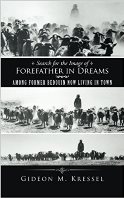|
Search for the Image of Forefather in Dreams : Among Former Bedouin Now Living in Town
|
|
Gideon M. Kressel
|

|

On evaluating dreams as the most important source of information concerning the unconscious, we are to bear in mind the contemporary cultural conscience that effect both the capacity of dreams and their interpretation. Dreams reflect memorized occurrences that have an impact on people’s psyche. Although human minds are shaped alike and dreams may occur, confronting them with a self-same manner, the analysis of dreaming materials and the sense given to dreams are culturally varied.
It is the cultural accent tested at a Middle Eastern society that promotes the appearance of elderly men while conceals speaking on the presence of women (mothers or others) in dreams. Assimilation of the fundamental insight causing psychic life is founded on two poles, maternal and paternal. It is the accent of cultural life that differentiates estimation of the image of each parent when appearing in dreams; whether the first or the second is left largely “unobserved”, the other obliges a perceiving attention.
Primordial images of The Great Mother find an outward expression in the ritual, mythology and art of early man. Revealing in track of The Golden Bough of J. G. Frazer, present-day accounts of dreams evince its relevance in tackling with modern man’s dreams. We call attention to selective concerns with Great Fathers appearing in dreams, a pattern born in mind following the ancient ‘matriarchal era’, that causes an avoidance of talk of dreams engaging the visit of mothers in dreamers’ minds.
.
|
|
